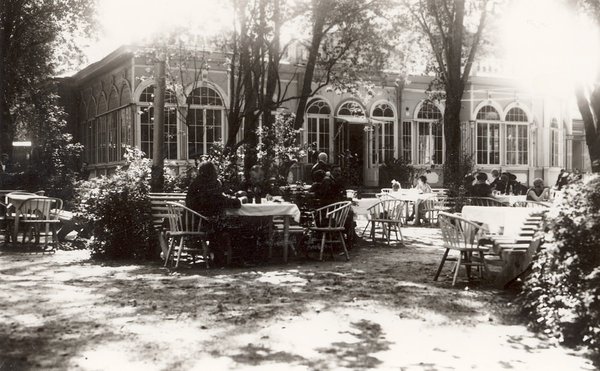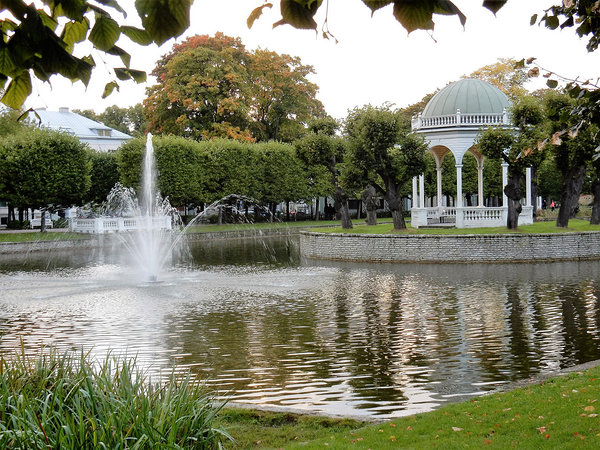People’s Park
In 1935 – 1940 in the Republic of Estonia
revalorization of the park and home culture was given national importance as an
expression independence, dignity, and awareness. It was planned to design
Kadriorg and its surrounding area into an entertainment venue with beautiful landscaping
- a so called People’s Park.
1934 saw the establishment of Kadriorg Committee and launch of systematic park planning measures. A competition was announced. The best solutions were selected, spurred by aspirations to establish a European People’s Park embracing national motifs. Work began in the fall of 1935. The Park was designed for the use of people of varied ages and interests, thus satisfying the first criterion of the nature of a people’s park.
New design touches included the Swan Pond’s surroundings which incorporated traditional folk costume woven belt inspired beds and a sundial, the construction of a Youth Park and an open air concert venue with a bandstand, a fountain, an alpine garden (now Rose Hill), and a sculpture embellished Apollo Square.
1934 saw the establishment of Kadriorg Committee and launch of systematic park planning measures. A competition was announced. The best solutions were selected, spurred by aspirations to establish a European People’s Park embracing national motifs. Work began in the fall of 1935. The Park was designed for the use of people of varied ages and interests, thus satisfying the first criterion of the nature of a people’s park.
New design touches included the Swan Pond’s surroundings which incorporated traditional folk costume woven belt inspired beds and a sundial, the construction of a Youth Park and an open air concert venue with a bandstand, a fountain, an alpine garden (now Rose Hill), and a sculpture embellished Apollo Square.

